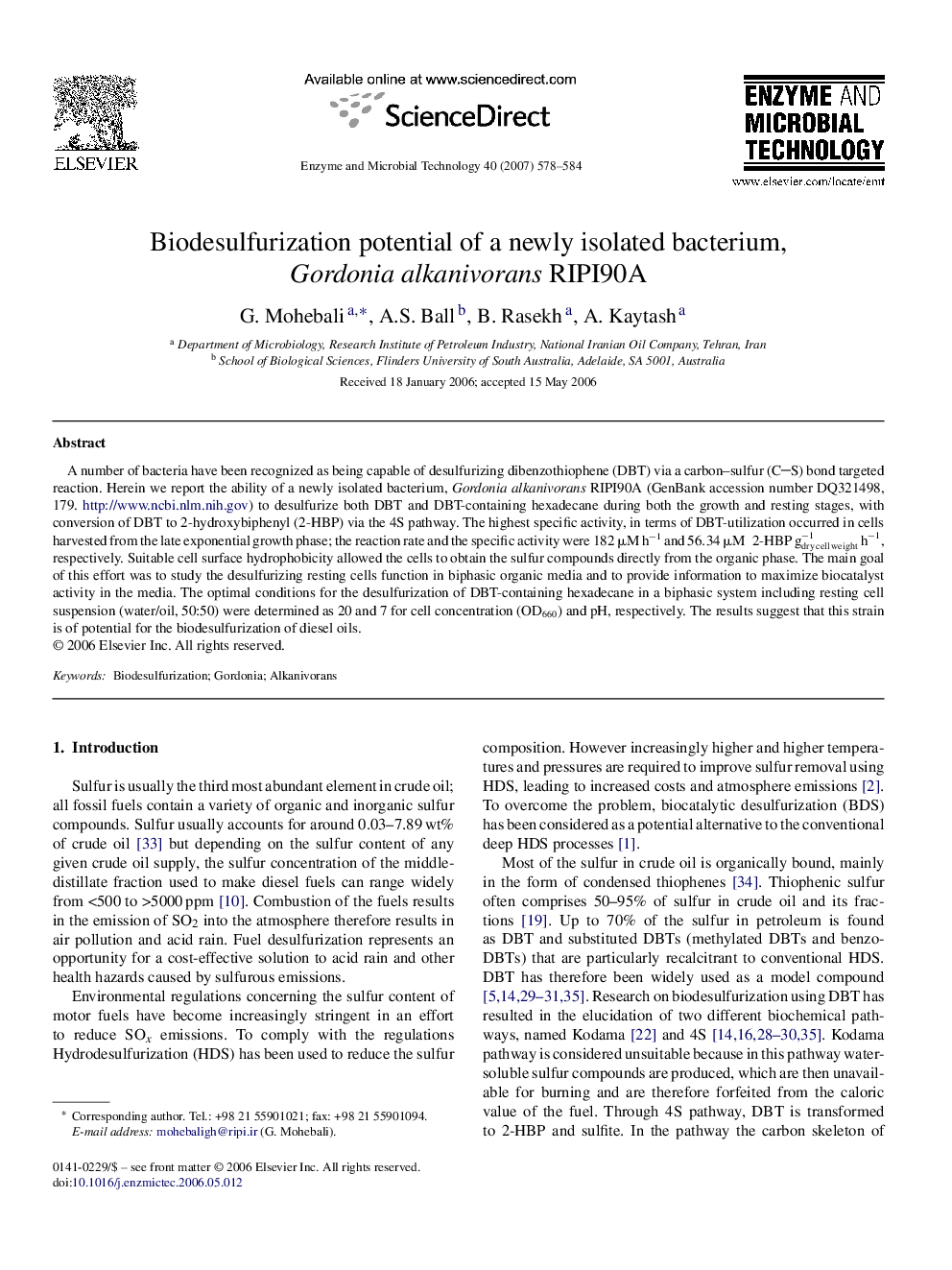| Article ID | Journal | Published Year | Pages | File Type |
|---|---|---|---|---|
| 18012 | Enzyme and Microbial Technology | 2007 | 7 Pages |
A number of bacteria have been recognized as being capable of desulfurizing dibenzothiophene (DBT) via a carbon–sulfur (CS) bond targeted reaction. Herein we report the ability of a newly isolated bacterium, Gordonia alkanivorans RIPI90A (GenBank accession number DQ321498, 179. http://www.ncbi.nlm.nih.gov) to desulfurize both DBT and DBT-containing hexadecane during both the growth and resting stages, with conversion of DBT to 2-hydroxybiphenyl (2-HBP) via the 4S pathway. The highest specific activity, in terms of DBT-utilization occurred in cells harvested from the late exponential growth phase; the reaction rate and the specific activity were 182 μM h−1 and 56.34 μM 2-HBP gdry cell weight−1 h−1, respectively. Suitable cell surface hydrophobicity allowed the cells to obtain the sulfur compounds directly from the organic phase. The main goal of this effort was to study the desulfurizing resting cells function in biphasic organic media and to provide information to maximize biocatalyst activity in the media. The optimal conditions for the desulfurization of DBT-containing hexadecane in a biphasic system including resting cell suspension (water/oil, 50:50) were determined as 20 and 7 for cell concentration (OD660) and pH, respectively. The results suggest that this strain is of potential for the biodesulfurization of diesel oils.
